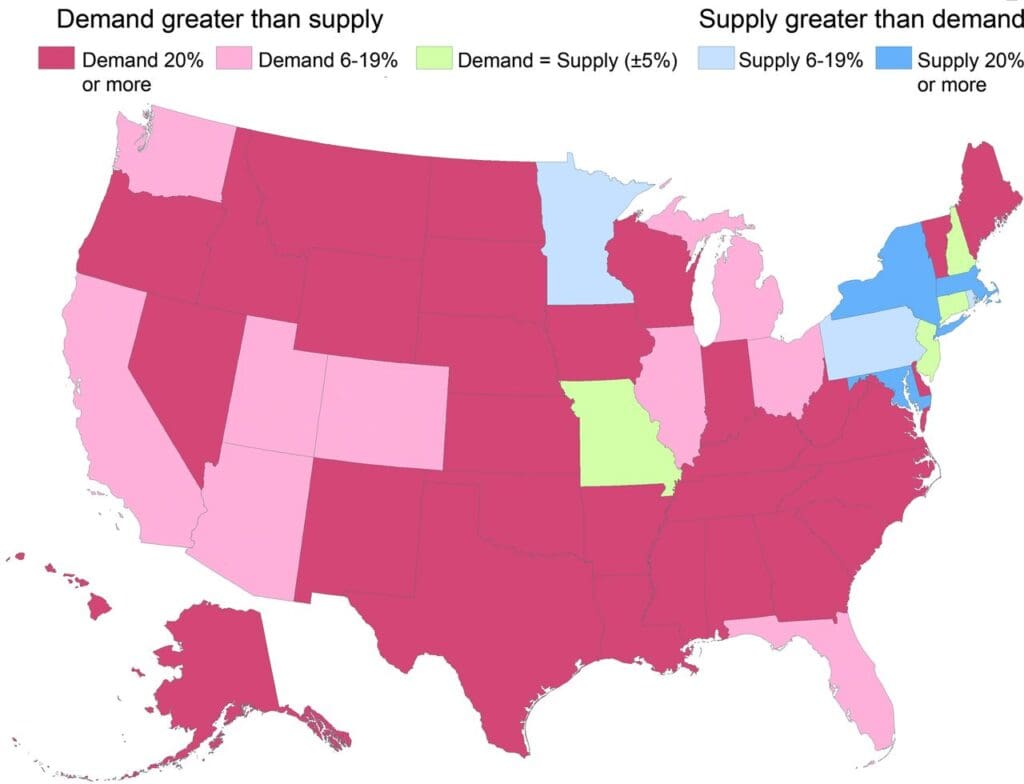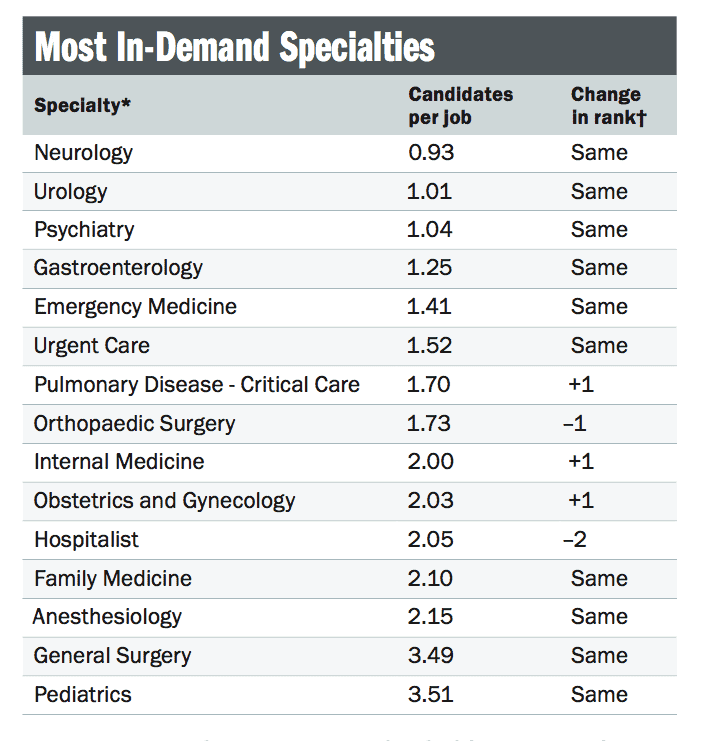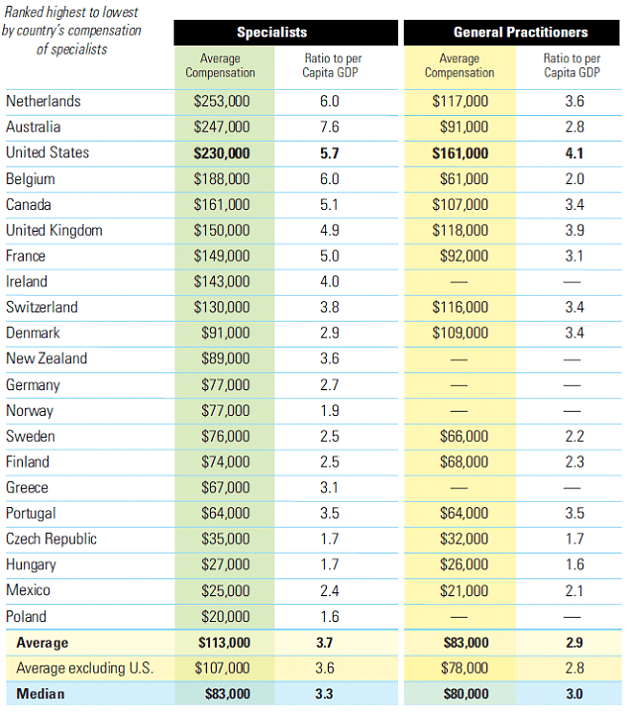Here, we are going to talk about:
- Why is there going to be a big need for physicians?
- Why neurology in particular?
- What is the current average neurologist compensation?
- What is the trend compared with previous years?
- How it is compared with other healthcare professionals?
Why there is going to be a big need for physicians than ever before?
- We are already in a shortage of physicians, currently US has 2.4 physicians per 1000 populations compared with 4-6 in other advanced countries.
- Baby boomer generation (1946-1964) which represents 20% of US population is now turning old, with most of them turning >60 they will need more physicians.
- Same goes for physicians, baby boomer generation physicians are now retiring with no adequate supply to replace them.
- Limited number of new physicians is another problem, caused in part by the expensive education and other part by the congressional cap on training spots (fixed number of funded residency spots since 1997)
Why neurology in particular is going to face a big shortage?
- With aging population, neurologists will be needed more.
- Among medical specialities, neurology saw a lot of changes over past decade. Stroke is a good example with new lines of treatment requiring neurology coverage 24/7 in tertiary care facilities.
- Let's look at the numbers:
- Most needed specialities: Family medicine, psychiatry, internal medicine & gynecology (Medscape 2019)
- Most difficult to recruit specialities: Neurology - Urology - Psychiatry - GI (Medicusfirm 2019)
- Most in-demand specialities: Neurology - Urology - psychiatry - GI (practice link 2019)
- This is mainly because there is less available neurologists compared with other specialities.


What is the current average neurologist compensation?
- It really depends on setting, location and speciality.
- Academics are lowest, private practice are highest
- Behavioral is lowest, neurocritical and neurohospitalists are highest
- East cost is lowest, midwest and southeast are highest
In 2018, this was my experience during my post-residency job search:
- Neurohospitalist: Midwest positions, hospital employed offered an average of 300-340K compared with 250-300K in east coast.
- General clinic: mostly RVU based in all locations, you get what you work. Example would be 300k for 5000 RVUs with 50-60$ per excess RVU.
- Academics: varies widely, 200-300K with lower numbers for clinic settings and higher for inpatient settings.
Let's look at other statistical websites, keep in mind they include academics which will sink the numbers a little bit:
- Medscape: average of 267K in 2019.
- Merrit Hawkins: average of 301K in 2019.
- Doximity: Average of 303K in 2019
So, if 300K is the average (Doximity and Merrit Hawkins), what is the average for academic and non-academic TOTAL income:
- 200K for academics and 400K for non-academics.
- 400K comes from a base salary 300-350K with 50-100K for additional call pays or tele-neurology.
How it is compared with previous years:
- Medscape: increased from 244 in 2018 to 267 in 2019. 9.4% increase. (the 4th place in percentage increase in salary)
How is the physician compensation compared with other countries:
- US ranks in 3rd place in highest specialist salaries after Netherland and Australia.
- US ranks in 1st place for general practitioner salaries.

Why there is a big need for physicians than ever before?
- US has only 2.4 active physicians per 1000 population, which is already in the bottom of the chart among other developed countries.
- Moreover, the baby boomer generation (1946-1964) which represent about 20% of the population is now moving toward the >60 age group. More elderly population will need more physicians.
- Regarding physicians, same goes, baby boomer physicians are now retiring and leaving the work force.
- Moreover, there is not enough physicians entering workforce compared with the population growth.
- Although we can get IMG physicians (trained outside US), the capped number of available residencies stands against that.
- So basically, US population is getting older, physicians are retiring and no adequate number of physicians entering workforce to replace them.
What about neurology? Why neurology is more needed now than ever?
- Again, aging population will need more neurologists. Stroke, dementia, neurodegenerative disorders, movements disorders which are the main bulk of neurology patients are mainly elderly.
- Neurology has seen more advances in treatment than any other speciality (may be excluding oncology). All hospitals now are seeking neurologists to secure their share of stroke patients.
- New disorders are being uncovered, will need to follow with a neurologist. Neuroimmunology is an example.